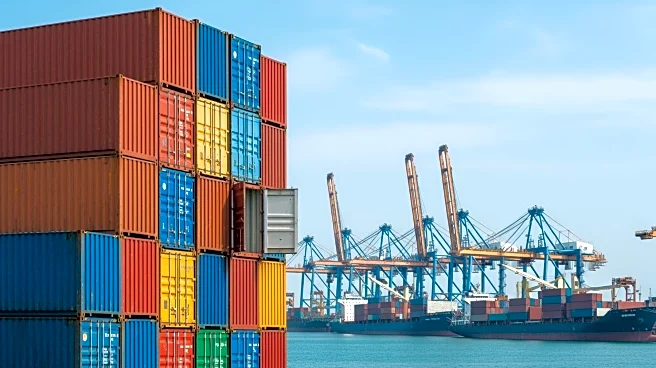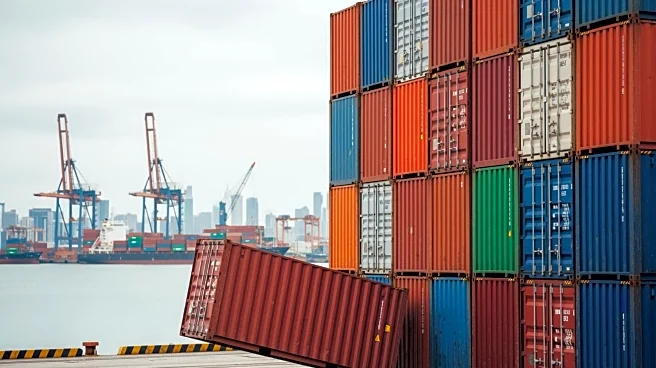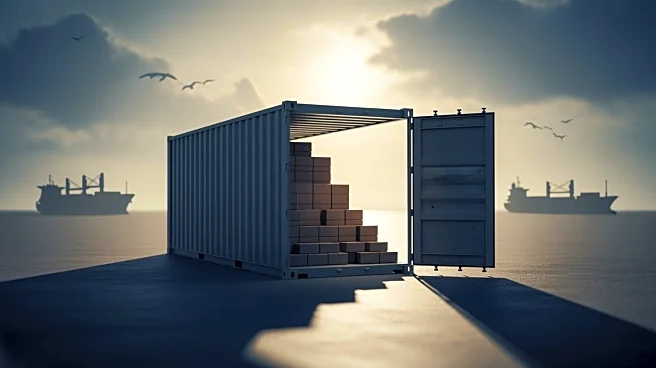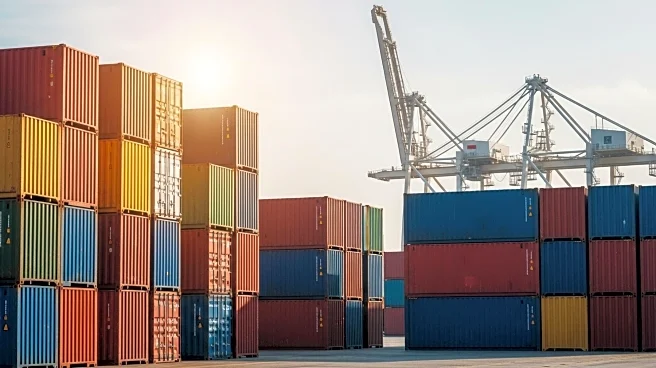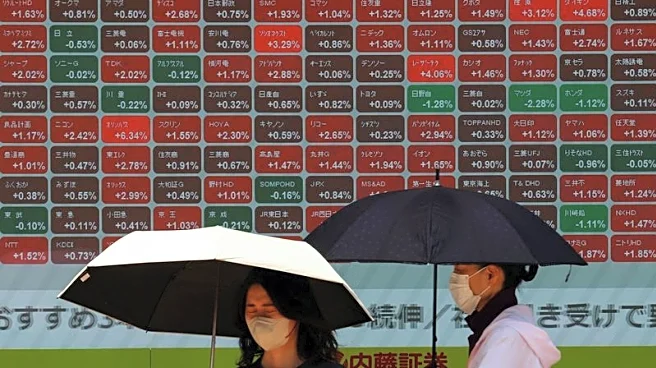What's Happening?
U.S.-bound containerized freight imports fell by 5.8% annually in September, according to S&P Global Market Intelligence. The decline follows reciprocal tariffs related to the International Emergency Economic
Powers Act, which affected most U.S. trading partners. On a year-to-date basis, imports increased by 3.2%, but a further decline is expected in the fourth quarter. Imports from Asia, particularly mainland China, are projected to fall significantly, while imports from the EU may see a slight increase due to a trade deal with the U.S. The decline in capital goods imports reflects weak manufacturing activity, while consumer discretionary products also saw a decrease.
Why It's Important?
The decline in U.S. imports highlights the impact of tariffs and trade policies on the economy. The reduction in imports from Asia, especially China, could affect supply chains and consumer prices. The shift in trade dynamics may lead to increased costs for businesses and consumers, impacting economic growth. The decline in capital goods imports suggests challenges in the manufacturing sector, which could affect investment and job creation. Understanding these trends is crucial for businesses and policymakers to navigate the changing trade landscape and mitigate potential economic disruptions.
What's Next?
The import downturn is expected to continue through the third quarter of 2026, with significant declines in imports from Asia. Businesses may need to adjust sourcing strategies and explore alternative markets to mitigate tariff impacts. The ongoing trade negotiations and tariff reviews will play a critical role in shaping future import trends. Companies may focus on cost negotiation tactics and investment in domestic production to reduce dependency on imports. Monitoring these developments will be essential for stakeholders to adapt to the evolving trade environment.
Beyond the Headlines
The decline in imports reflects broader economic challenges, including the impact of tariffs on global trade. The shift towards reshoring and domestic production highlights the need for strategic investment in manufacturing and infrastructure. The trade dynamics underscore the importance of international cooperation and negotiation to address tariff-related issues. The evolving trade landscape presents opportunities for innovation and diversification in sourcing and production strategies.
